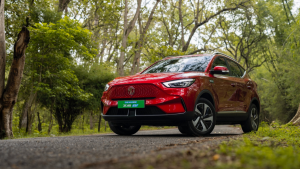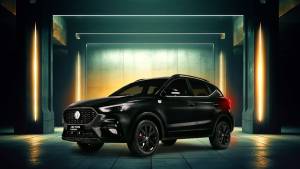MG Gloster road test review
The Gloster eluded most of us hacks at the 2020 Auto Expo since MG added it to their exhibit only after the media days were over. It wasn't decided so, because the car just didn't arrive in time for the media to lay their eyes now. And yet it created quite a bit of news because the Gloster is anything but elusive. With its massive proportions, it wowed the audience at the show and everyone and their uncle was posting selfies with it despite its relatively conventional design.
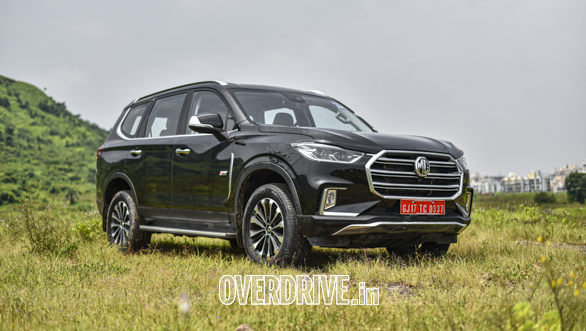 The MG has massive proportions and that will be one of its biggest selling points!
The MG has massive proportions and that will be one of its biggest selling points!
Design
Contrary to that, my first drive out with the Gloster didn't turn as many heads though and that was underwhelming! Maybe it was the colour that wasn't standing out at night or people were just too busy relearning the nuances of driving in the city post the lockdowns and didn't have the space of mind to notice this new brute. Or maybe it's just the simplicity of the Gloster's design that doesn't make it as remarkable.
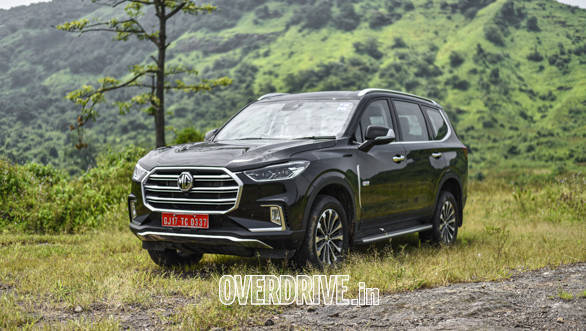 It is 4,985mm long, 1926mm wide and 1,867mm tall
It is 4,985mm long, 1926mm wide and 1,867mm tall
That said, it looks like nothing else on the road - not even its own siblings - and that can work as a double-edged sword. Some might find it too sober compared to the Hector while some will appreciate its understated elegance. There is no chaos of character lines or too much bling. There is chrome garnish, of course, but limited to the door handles and some trimmings around the windows and bumpers. The grille is done up in a more tasteful satin finish and given its imposing size and chunky slats, anything shiner could have looked gaudy. However, I believe that the riveted or diamond-pattern grille, akin to the Hector Plus, would have been more befitting for the Gloster's premium positioning.
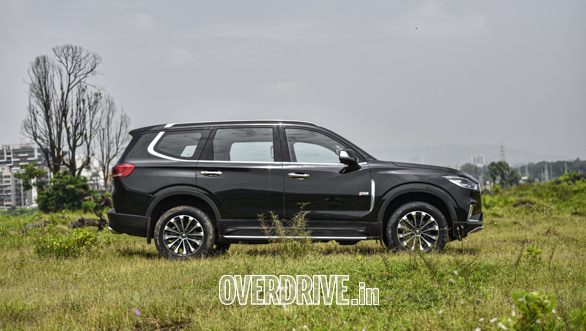 The Gloster sits on a wheelbase of 2,950mm and rides on 19-inch wheels
The Gloster sits on a wheelbase of 2,950mm and rides on 19-inch wheels
The headlights are pretty large too, but look closely and you will appreciate the finer details around them - like the complex detailing around the LED lamps, or the kink in the bonnet's shut line that interplays with the twin-pot arrangement of the lights, or the little extensions that connect the lamps to the grille. These details are bound to stand out in sportier colours though. The adaptive LED headlights can't be adjusted of course, and though they have a decent spread, the throw and focus aren't up to the mark. The setup uses white lights in the headlights and yellow for the fog lamps, which works well on paper, but doesn't match up on the road for the Gloster. For what the specs suggest, I expected better illumination to go in a car this big.
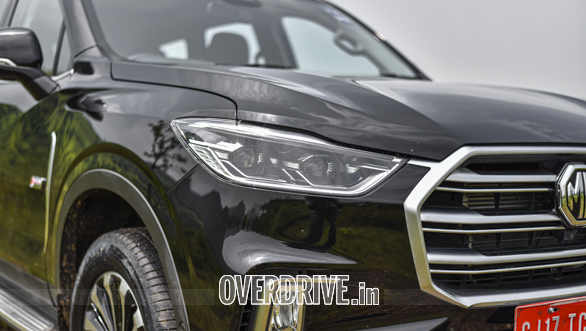 The Gloster is specced with adaptive LED headlamps on the range topping Savvy trim
The Gloster is specced with adaptive LED headlamps on the range topping Savvy trim
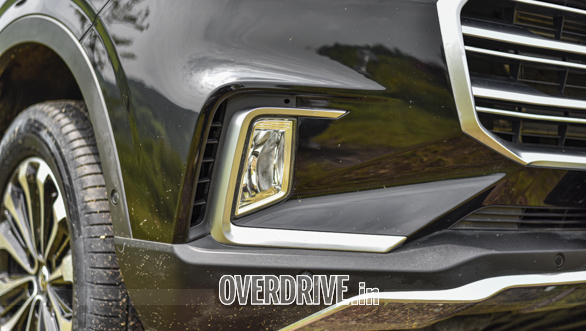 The fog lamps aren't LED
The fog lamps aren't LED
The massive proportions of the Gloster will appeal to many and will be its biggest selling point. Think of it as a Mercedes-Benz GLS or an Audi Q7 on a shoestring budget. It even dwarfs a Range Rover Sport with its size! Speaking of which, there is a very Range Rover inspired vertical appliqué between the front doors and the wheel arches and because MG wants to underscore their British origins, there is a badge on the door that shows off the Union Jack.
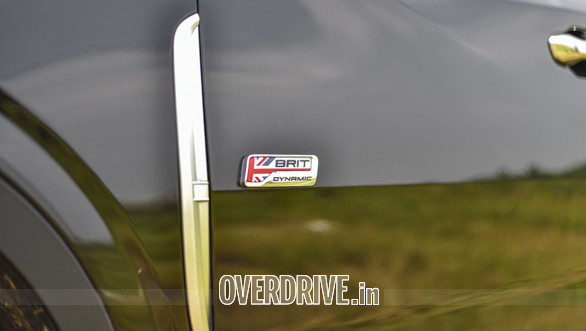 MG wants to remind you of its British roots
MG wants to remind you of its British roots
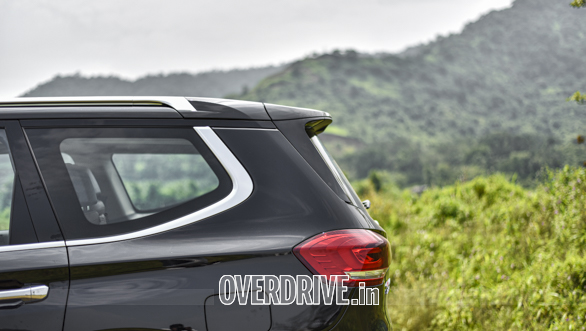 The taillight and D-pillar treatment will remind you of the Mercedes-Benz GLS
The taillight and D-pillar treatment will remind you of the Mercedes-Benz GLS
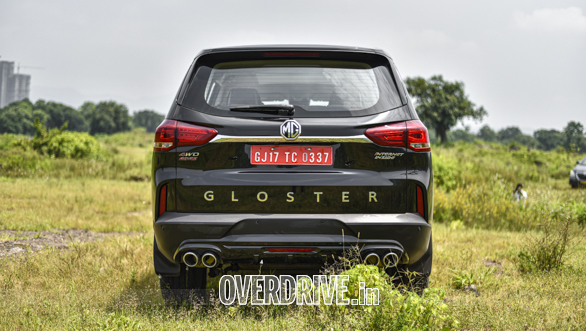 A subtler "Gloster" insignia on the chrome bar below the windshield would have been a more sophisticated design element
A subtler "Gloster" insignia on the chrome bar below the windshield would have been a more sophisticated design element
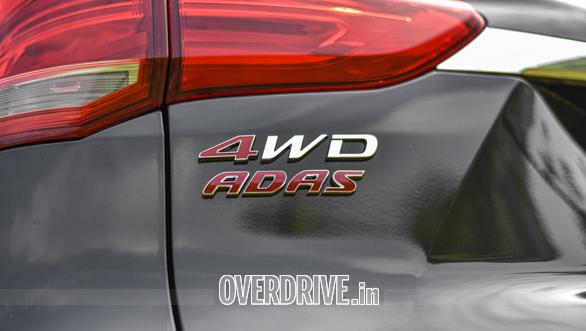 ADAS stands for Advanced Driver-Assistance Systems and these are the Gloster's USP
ADAS stands for Advanced Driver-Assistance Systems and these are the Gloster's USP
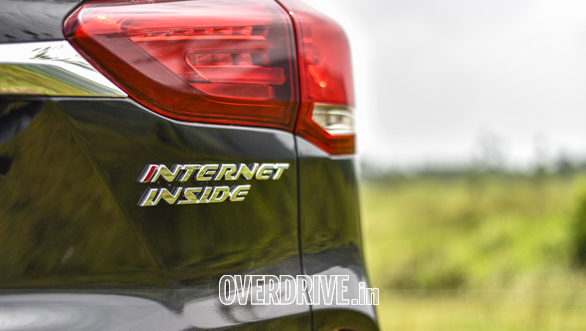 The familiar "Internet Inside" badge points to the connected tech that the Gloster comes activated with
The familiar "Internet Inside" badge points to the connected tech that the Gloster comes activated with
Speaking of badges, there are a bit too many of them at the rear of the Gloster and the sheer number of people opting of the "Morris Garages" spaced-letters on the bonnet of the Hector, suggests that MG's customers like to have plenty of them. In that sense, it reminds me of the erstwhile Rexton - but let's hold on to the SsangYong thought for later. If I was buying I would have preferred a subtler Gloster insignia below the rear windshield. But being an MG, the Gloster loves to flaunt its tech on its sleeve (or tail in this case), and therefore there are the "Internet inside" and "ADAS" badges on the boot too.
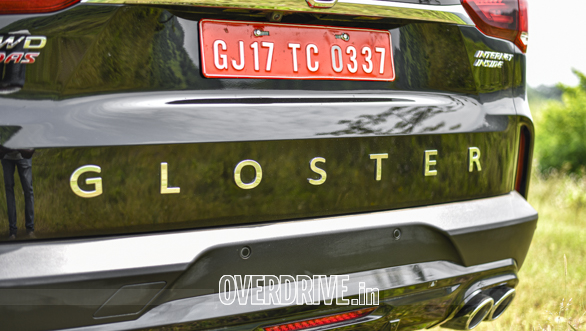
Cabin and stand-out features
Between those badges on the tailgate and what they mean for you inside in the cabin, there are three rows of seating. The Gloster feels like a size larger than the Endeavour and the Fortuner and therefore all the rows get a lot more breathing space too. Get into the third row and you will realise why I call the Gloster a GLS on a shoestring budget. Unless the person in the second row decides to stretch out their legs and retract the seats completely, there is a generous knee room and foot-space in the third row even for two adults. With all seats up, the boot space is a hatchback-rivalling 343l, but dropping both the third-row seats flat liberates 1,350l of it.
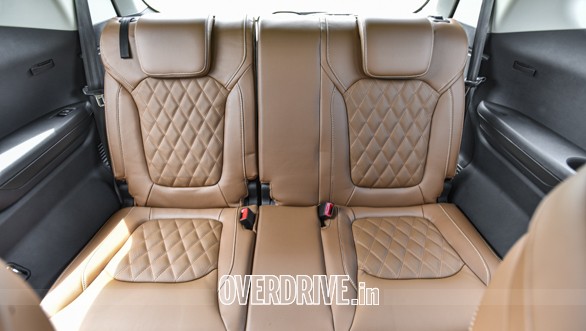 On short jaunts, the third row of seating is fairly comfortable even for two adults
On short jaunts, the third row of seating is fairly comfortable even for two adults
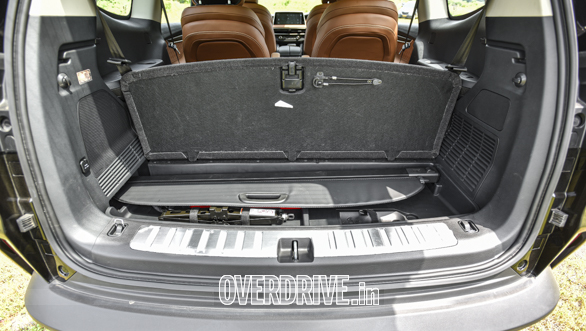 With the third row up, the boot space is 343l
With the third row up, the boot space is 343l
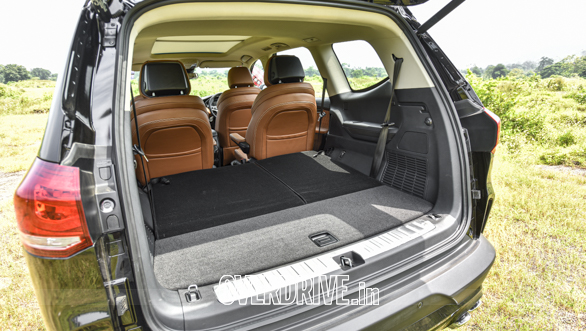 The third row folds in a 50:50 split and dropping both seats liberates 1,350l of boot space
The third row folds in a 50:50 split and dropping both seats liberates 1,350l of boot space
The second-row of seats on our test car came with two captain seats and MG allows buyers to specify a bench option too for a seven-seat configuration. The second-row captain seats are generously sized to accommodate passengers even taller and broader than my average frame and the bolstering is very well laid out too. They are also a tad bit more comfortable than the buckets at the front (see caption). The second and third rows get their individual AC vents on either side of the roof, and while the lack of vents in the centre or on the B-pillars might raise some eyebrows, rest assured that there is a superb circulation of air in all-three rows even with a full house (at least on the tested six-seater variant). Adding further airiness to the cabin are the large windows and massive panoramic roof, and the latter also has a more silent operation than the one in the Hector.
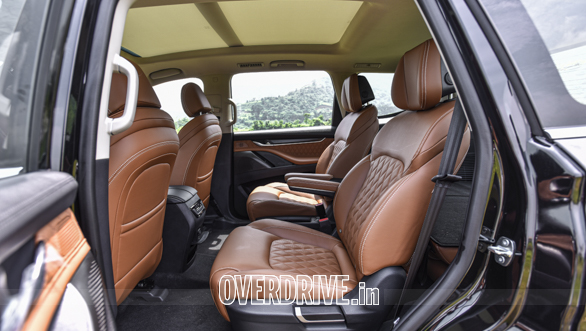 While the second-row seats look similar to the buckets up front, they have armrests for better long-distance comfort.
While the second-row seats look similar to the buckets up front, they have armrests for better long-distance comfort.
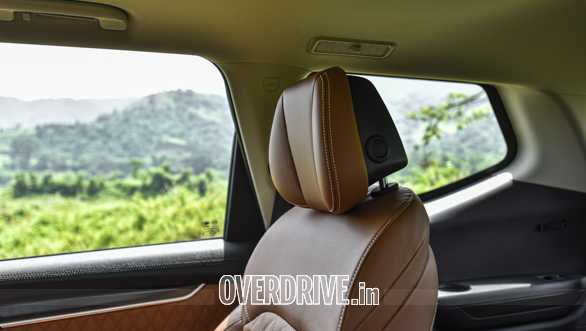 Complementing the long-distance comfort further are larger headrests with softer cushioning
Complementing the long-distance comfort further are larger headrests with softer cushioning
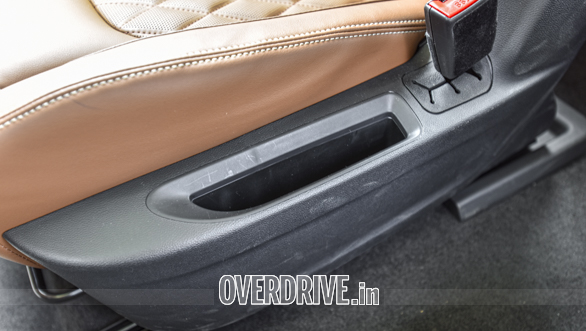 There are quite a few storage spaces in and around the second and third-row seats
There are quite a few storage spaces in and around the second and third-row seats
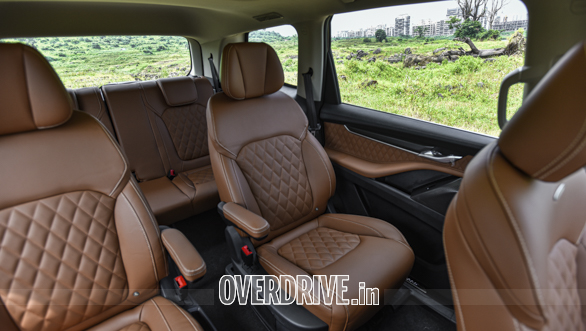 All three rows of seating have an airy feel to them thanks to the large windows...
All three rows of seating have an airy feel to them thanks to the large windows...
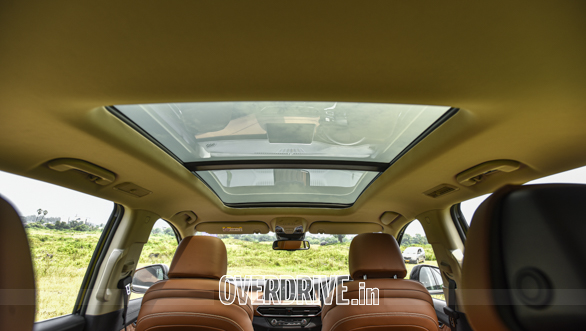 ...and the wide panoramic glass roof
...and the wide panoramic glass roof
MG's well-connected parents, SAIC, give the carmaker access to plenty of techs, parts and even cars of varied order. That not only explains why all of MG's offerings in India look so different from each other, but the portfolio-sharing on a global scale also allows MG's cars to have premium and cutting-edge tech without having to worry too much about sales volumes. The Gloster is the best example of this fact and you realise that the moment you get into the front seat and start fiddling with the infotainment.
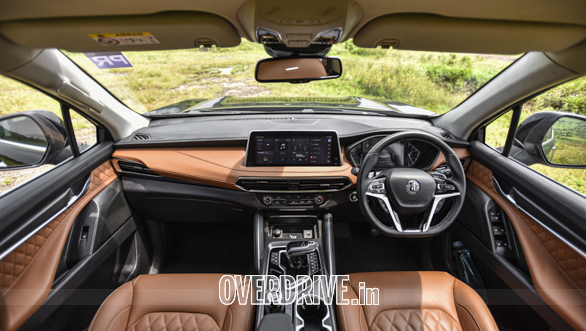 The dashboard layout looks new age, while the leather inlays add a touch of lux
The dashboard layout looks new age, while the leather inlays add a touch of lux
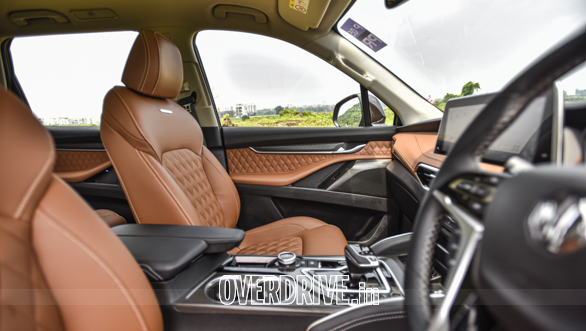 The high tunnel console and the generously sized seats impart a cosseting feeling similar to luxury cars
The high tunnel console and the generously sized seats impart a cosseting feeling similar to luxury cars
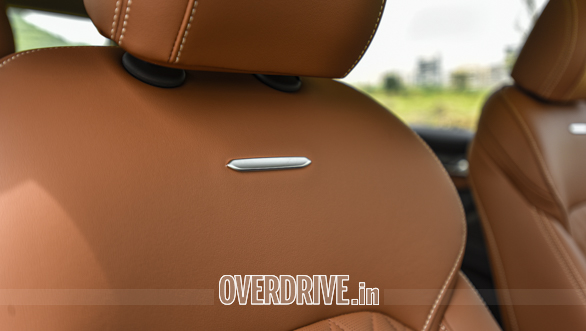 "Morris Garages" inscribed on these metal plaques would have been a nice touch. Missed opportunity, this.
"Morris Garages" inscribed on these metal plaques would have been a nice touch. Missed opportunity, this.
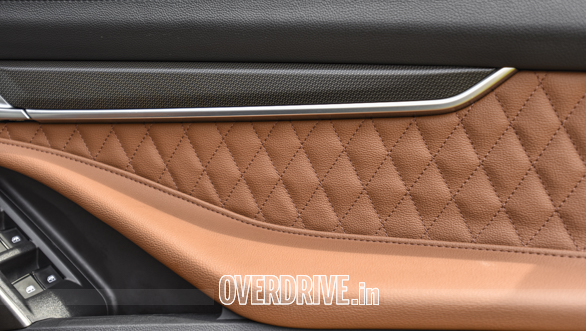 The quilted textures on the seats and inlays give the cabin a premium feel
The quilted textures on the seats and inlays give the cabin a premium feel
Sure, it is not like the Volvo-inspired vertical screen in the Hector but this 12.3-inch dash-top mounted horizontal screen feels like it came straight out of some luxury car. Though the UI isn't the most intuitive and has many empty spots that could have utilised better, the software and hardware feel responsive and slick. There a few downsides to it similar to the Hector e.g. the voice command system still feels primitive, the Gaana app's interface isn't optimised for in-car usage, and the audio levels can't be muted or lowered when the reversing cam is activated. But MG promises that some of these are pre-production shortcomings and will be fixed or optimised going forward. To that effect, the system supports over-the-air updates too.
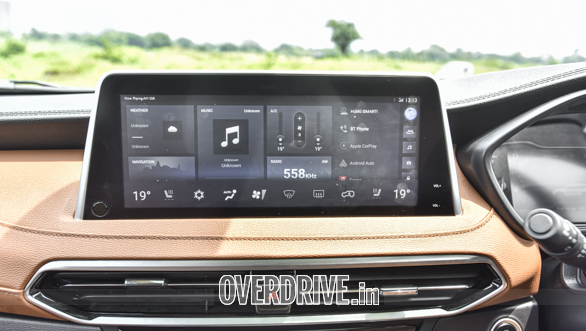 The user interface isn't very intuitive but its a matter of getting used to
The user interface isn't very intuitive but its a matter of getting used to
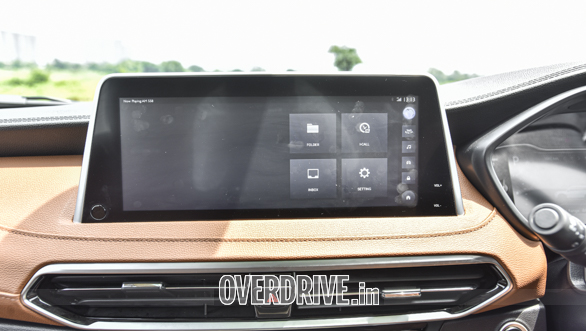 The empty spaces could have been utilised better
The empty spaces could have been utilised better
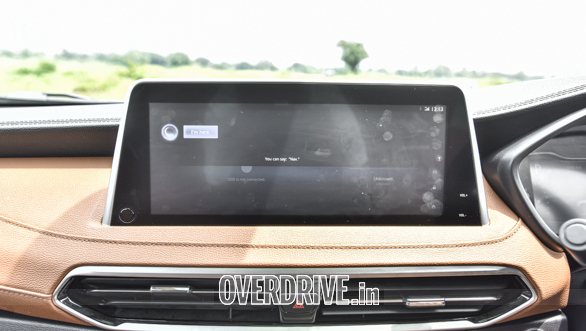 The "Hello MG" digital assistant still feels confused and primitive
The "Hello MG" digital assistant still feels confused and primitive
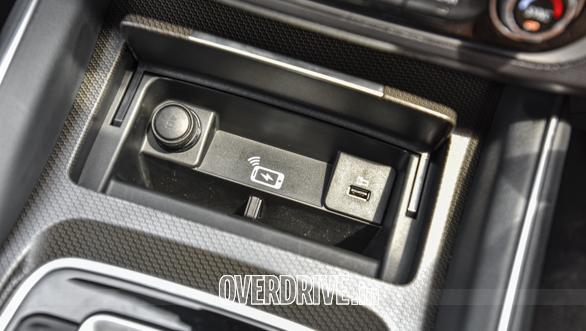 The wireless charger is awkwardly placed and needs to push the phone in like a cassette. It didn't end too well for me as it ended up cracking the protective tempered glass on my phone
The wireless charger is awkwardly placed and needs to push the phone in like a cassette. It didn't end too well for me as it ended up cracking the protective tempered glass on my phone
The iSmart connected suite has all the features you expect from the "Internet Inside" badge - remote operation of the locks, windows and sunroof through the phone, pre-cooling functionality for the cabin, geofencing and vehicle tracking, weather information etc. In fact, the latter also pleasantly surprised me when it proactively warned us about the upcoming thunderstorms that hit Mumbai during our tests and suggested we plan our drives accordingly!
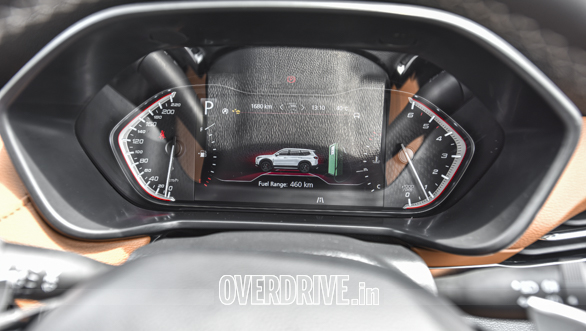 The digital instrumentation is easy to read, but the warning message come and go in a flash
The digital instrumentation is easy to read, but the warning message come and go in a flash
Safety
In fact, such warnings are something you will have to get used to with the Gloster. It has blinkers inside the wing mirrors paired to loud audible beeps to warn you of objects in your blind spot, there are audio-visual warnings from the instrumentation that promptly ring every time you stray out of your lane, the GPS will constantly warn you of upcoming curves (and occasionally, even speed humps), and a collision warning will pop if you are tailgating someone at city speeds. Of course, all of this can be turned off, but that would make the ADAS badge on the boot, irrelevant.
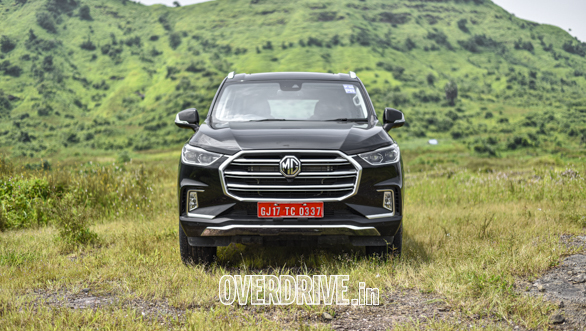
In fact, these Advanced Driver-Assistance Systems are the other big talking point for the Gloster. Basic ADAS is a compulsion in the EU now and even an Ignis ships with it, but in India, it is a safety feature-set restricted to some of the more expensive cars given its cost and usage restriction on certain frequencies, thanks to the radar system it uses. In the Gloster, the ADAS enables features like the aforementioned Lane Keep Warning, Forward Collision Warning, Automated Emergency Braking and Adaptive Cruise Control. The latter alters or adapts the cruise control speed as per the vehicle in front of the car, irrespective to the target speed set by the driver. When the need be it will also bring the vehicle to a complete halt. We put this system to the test on the Mumbai-Pune expressway with its well-marked lanes and even took the car to some slower B-roads where lane markings didn't exist and yet the adaptive cruise control worked better than some of the luxury cars we have tested in similar conditions. The only system we couldn't get working on our pre-production prototype was the Automated Emergency Braking.
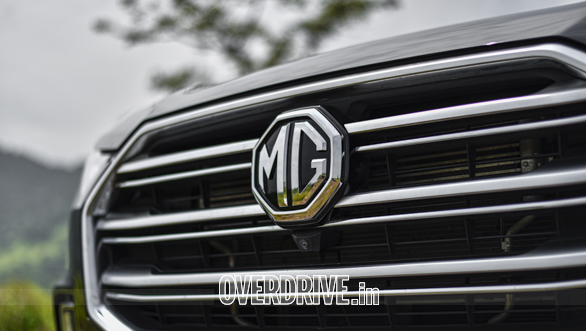
Engine performance and driving dynamics
The Gloster we tested in the Savvy trim is the only one from the range to get the ADAS. The other big talking point for this trim is its 2.0l diesel engine which gets a twin-turbo configuration compared to the single-turbo induction available in the lower trims. The engine has excellent refinement, is quite fuel-efficient (City: 9.61kmpl/Highway: 14.32kmpl) and the two turbos aim to trump the competition further by churning out a class-leading 218PS of power and 480Nm of torque, which was good for a 0-100kmph sprint of 11.9s in our test. That is a respectable figure for a car this big, but the in-gear acceleration is average and highlights the turbo-lag of this engine.
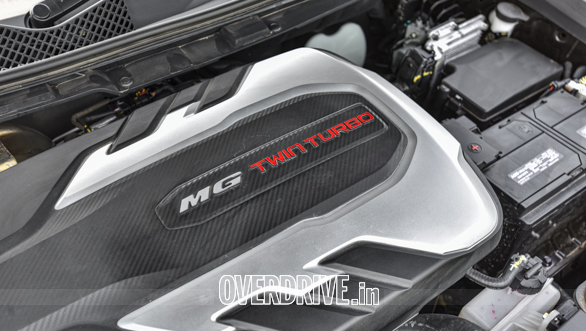 While the range-topping Savvy trim gets the twin-turbocharged 2.0l diesel, the lower trims get the same engine in a single-turbocharger configuration
While the range-topping Savvy trim gets the twin-turbocharged 2.0l diesel, the lower trims get the same engine in a single-turbocharger configuration
It is mated to an eight-speed torque-converter automatic. The tuning of the gearbox still has some rough edges though. Like the Hector's DCT, it is slow to make quick gear selections in certain situations like coming over a speed hump, or slowing down for a pothole and building speed right after. But in normal cruising conditions in the city or highway, it is quick to move up to higher gears, or downshift quickly when you step on the pedal for an overtake. Around the winding roads, it does fairly well, but you are better off shifting gears on your own with the chunky paddle shifters.
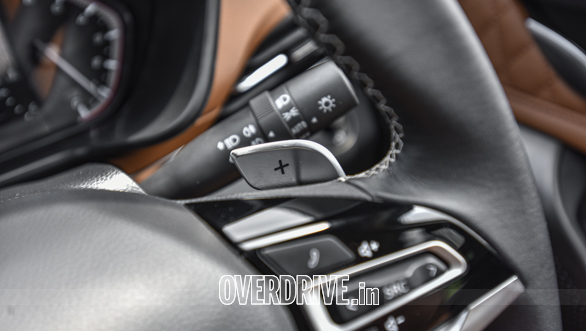
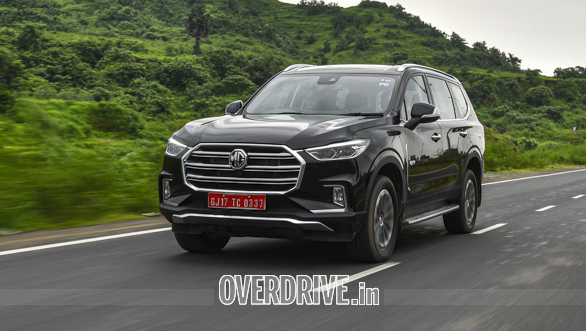
The Gloster brakes impressively for its 2.5 tonnes of mass. The suspension is tuned on the firmer side too, which means the Gloster has a taut body control despite its body-on-frame construction and it feels planted at highway speeds too even if you are not driving with a full house. On rumbler strips or a series of joints typical to the concrete highways in India, the Gloster does feel a bit stiff and tends to skip and squirm. It also has consistent vibrations through the floorboard while driving on concrete roads, and that can get annoying after a while in spite of the cabin being relatively quiet otherwise. On poor roads with slower speeds, the suspension does a fairly better job and soaks up most of the undulations. The 19-inch wheels may look small for a vehicle this big, but anything larger would have made the ride harsh on our road conditions.
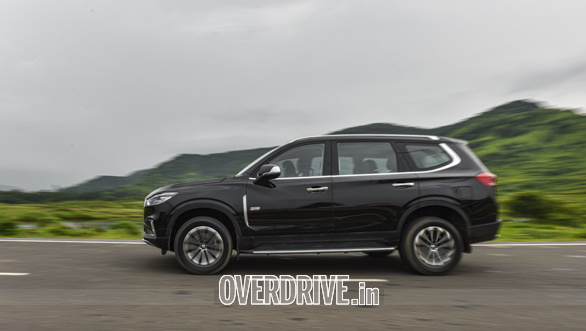
In fact, the Gloster is quite capable off the road too, and with the right set of tyres, it should be a lot of fun for recreational explorers. To that effect, the Gloster features on-demand four-wheel-drive, a Borg-Warner two-speed transfer case with an electronic diff-lock and preset terrain modes for mud, sand, snow and rocks. The Rock mode, like in the Compass Traihawk, is the only one that gives the driver a low-range ratio and on our test, the Gloster climbed up and descended a mossy rock trail without any drama from the road tyres. Adding more mettle to its off-road merit is a 210mm ground-clearance, short overhangs, 550mm of water wading capability, excellent visibility all-round and a 360-degree camera too.
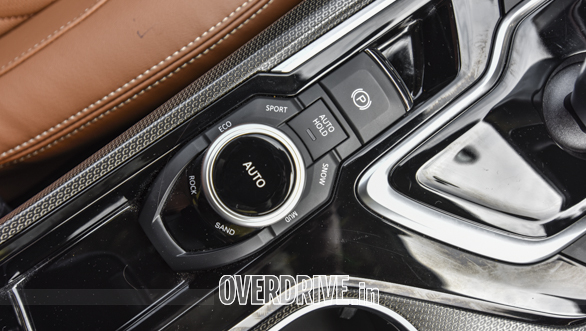
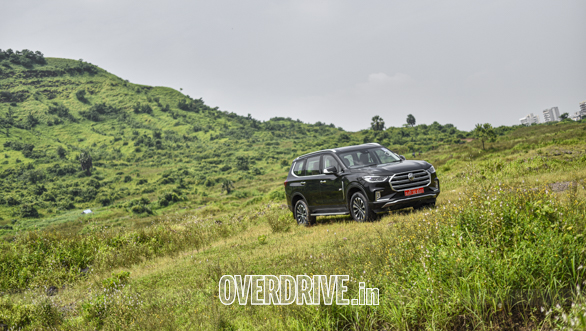
Verdict
If you are stepping up from a compact SUV, the Gloster has plenty to keep you entertained. While the ADAS features and connected tech do push up the price quite a bit, the lower trims take on natural rivals like the Ford Endeavour and the Toyota Fortuner quite convincingly and pose to be the more value for money alternatives. The Gloster then is aimed at those seeking a comfortable three-row SUV that has the poise and appointments of a luxury SUV but at the price of an entry-spec luxury compact, and that should theoretically work in its favour.
Photography: Anis Shaikh
Starts Rs 29.98 Lakhs
1996cc
Automatic
163
480
-NA-
Starts Rs 79.99 Lakhs
2984cc
Automatic
340
500
-NA-
Starts Rs 32.75 Lakhs
1996cc
Automatic
170
420
13.9 Kmpl
Starts Rs 99.9 Lakhs
2925cc
Automatic
330
700
-NA-
Starts Rs 29.98 Lakhs
2755cc
Automatic
150
500
-NA-
